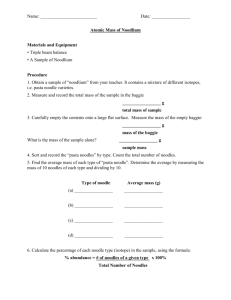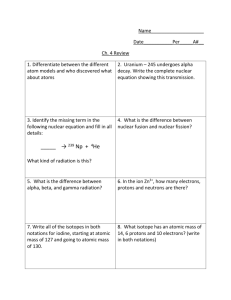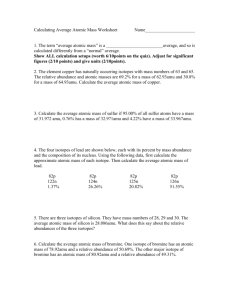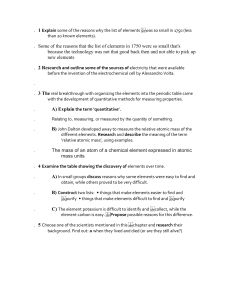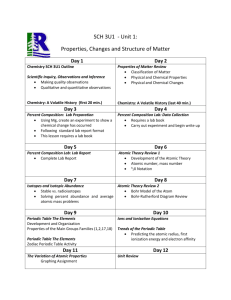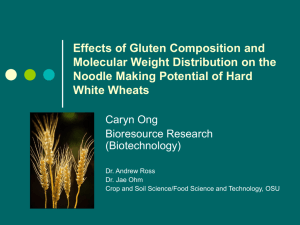Atomic Mass of Noodlium
advertisement
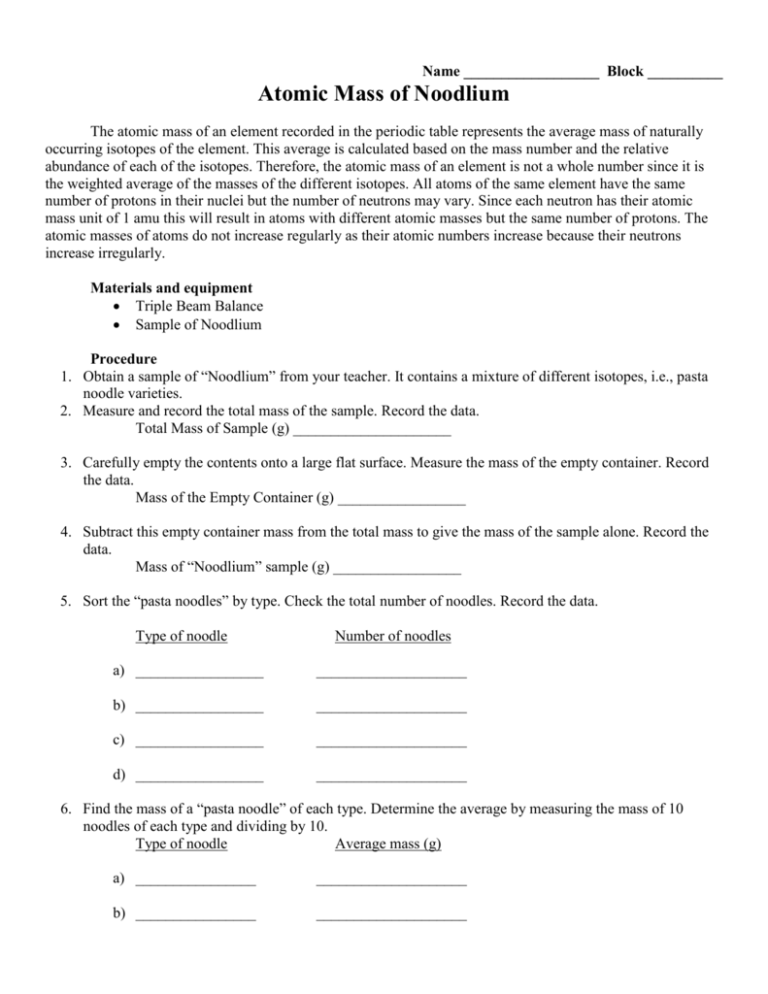
Name __________________ Block __________ Atomic Mass of Noodlium The atomic mass of an element recorded in the periodic table represents the average mass of naturally occurring isotopes of the element. This average is calculated based on the mass number and the relative abundance of each of the isotopes. Therefore, the atomic mass of an element is not a whole number since it is the weighted average of the masses of the different isotopes. All atoms of the same element have the same number of protons in their nuclei but the number of neutrons may vary. Since each neutron has their atomic mass unit of 1 amu this will result in atoms with different atomic masses but the same number of protons. The atomic masses of atoms do not increase regularly as their atomic numbers increase because their neutrons increase irregularly. Materials and equipment Triple Beam Balance Sample of Noodlium Procedure 1. Obtain a sample of “Noodlium” from your teacher. It contains a mixture of different isotopes, i.e., pasta noodle varieties. 2. Measure and record the total mass of the sample. Record the data. Total Mass of Sample (g) _____________________ 3. Carefully empty the contents onto a large flat surface. Measure the mass of the empty container. Record the data. Mass of the Empty Container (g) _________________ 4. Subtract this empty container mass from the total mass to give the mass of the sample alone. Record the data. Mass of “Noodlium” sample (g) _________________ 5. Sort the “pasta noodles” by type. Check the total number of noodles. Record the data. Type of noodle Number of noodles a) _________________ ____________________ b) _________________ ____________________ c) _________________ ____________________ d) _________________ ____________________ 6. Find the mass of a “pasta noodle” of each type. Determine the average by measuring the mass of 10 noodles of each type and dividing by 10. Type of noodle Average mass (g) a) ________________ ____________________ b) ________________ ____________________ c) ________________ ____________________ d) ________________ ____________________ 7. Calculate the percentage of each noodle type(isotope) in the sample, using this formula: Abundance = # of noodles of a given type Total # of noodles x 100 Type of noodle abundance % a) ________________ ____________________ b) ________________ ____________________ c) ________________ ____________________ d) _______________ _____________________ 8. Determine the weighted average atomic mass of noodlium using the formula: [massA x abundanceA] + [massB x abundanceB] + [massC x abundanceC] + [massD x abundanceD] ___________________________________________________________________________________ 100 Weighted average mass of noodlium is: ______________________ Questions 1) Is your weighted average mass consistent with the total sample mass? 2) Define isotope. Explain the differences between neon-19, neon-20, and neon-22. 3) The following are natural isotopes of magnesium. Calculate the average atomic mass of magnesium given the following % abundance. Mg-24 78.99% Mg-25 10.00% Mg-26 11.01%
